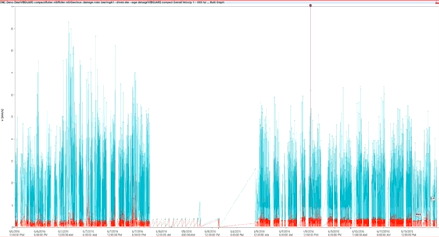What Is Shock Pulse?
HD technologies consist of two different measurement techniques: SPM HD and HD enveloping. Vibration enveloping is commonplace for many of you.
The shock pulse method was invented in the late 1960s. In rolling element bearings, there is a phenomenon where electric waves, or elastic waves, or shock pulses, or impact signals, are generated. The amplitude of these impacts is determined by three different parameters.
The first parameter, the mechanical bearing condition, is represented by HDm (max value). The second is the ability of the lubricant to establish a film between the raceways and the rolling elements, and this is represented by HDc. The third is the dependence on rolling element philosophy. Nowadays, with frequency-controlled motors, that’s a nasty thing.
Through intensive research in the early 1970s, SPM has come up with normalization standards in order to transform an absolute value to a normalized value, using an HDI value calculated from the shaft diameter and rpm. This establishes the green, yellow, and red condition scale shown above, with default alarm settings. This gives you an insight into the bearing condition and lubricant film condition.
Here are a few examples we often come across. The thick yellow line which is meant to separate the rolling elements from the raceways, minimizing metal-to-metal impacts. This results in a shock pulse pattern which is low, in the green area, and has a minimal difference between HDm and HDc, or the peaks and the noise floor. This is a bearing in good running condition, with proper mounting and lubrication.
The middle bearing shows a reduced lubricant film. The ability of the lubricant film to separate the raceways has been reduced, and there is increased metal-to-metal contact. This results in an elevated noise floor in the shock pulse pattern. This is a typical lubrication issue.
The third bearing has a spall on the outer race. Due to this, there is a rhythmic impact from the rolling elements over the outer race, which you can see in the high-amplitude peaks. There is a low HDc value and a high HDm value. The difference, or delta, between the two, has increased.






